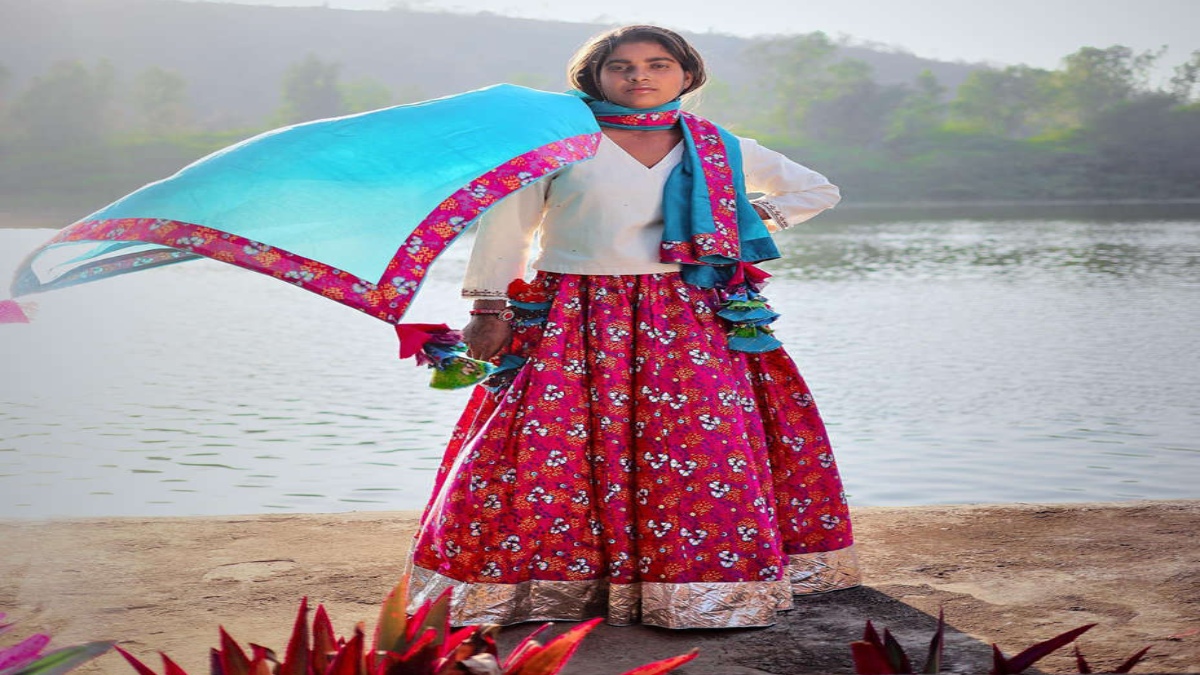Cheent, or chintz, as the European high-fashion ateliers like to call it, is an ancient technique of hand-painting and resist dyeing that was practised across many historic textile hubs in India, especially in Gujarat and Rajasthan, where it still remains a symbol of tribal revelry and rustic dressing.





Very close to the heart of the beautiful Maharani Mandakini Devi of Santrampur, cheent has been revived today as one of the many cultural projects undertaken by the Santrampur royal family, with a tiny little studio coming alive within their home, Sri Joravar Palace. Recreating this textile both as yardage as well as beautiful saris, she collaborates with the Rani of Baria Jaykirti Singh to create interesting silhouettes of the lehenga, aabha kurta, jacket and choli under the revivalist banner Ambarhue. Daughter of the legendary politician Digvijay Singh, who is the head of the Raghogarh princely state of Madhya Pradesh, Mandakini was struck by the beauty of this textile after marrying into Gujarat. “It has held the whole world spellbound. While what you see as chintz is very European in its influence, cheent, as recreated by Amberhue is rustic and close to the tribal floral forms of Gujarat,” she says.
“It is also a textile tradition close to Rajasthan, and when Mandakini asked me to create silhouettes out of it, I was thrilled,” shares Jaykirti. Originally inspired by Mughal motifs, chintz floral prints were inspired by Islamic art—the arabesque and the Safavid art of Persia. The tree of life motif, that now also graces the Victoria & Albert Museum, was the first chintz pattern to gain popularity in Europe.
“Chintz, polished cotton of verdant foliage and leaves coloured in multiple rich hues, was unlike anything the Europeans had known. Its lustrous beauty evoked visions of strange cultures and unknown lands. The print was bright, the colours were fast, the pattern exotic, and the cotton – which was new to the West – was highly desirable in itself. It was far superior to anything produced in Europe at the time and there was an immediate demand. It initially entered European homes as an interior fabric. Much later it was used to dress up the genteel folks. It was exported as “Palampore” fabrics, which is an Anglicized term for the Hindi word palanposh meaning bed cover!” writes Hemlatha in her researched essay on softpowermag.com
Eye-catching for the Europeans then, it is equally bewitching for visiting tourists from France and Germany now, “who interestingly buy the typical tribal skirt of Gujarat in that print”, shares Mandakini. Through this project, she is keeping an entire village of block printers employed. “Rajput families like ours live in distant towns and rural belts, surrounded by villagers that our families ruled for centuries. The local milieu in these regions is employed either in the business of farming or craft,” she says.
“Besides Ambarhue, we also promote local produce through our project Santrampur Field and Flowers,” she informs. Digging into her grandma’s recipe book to create organic sorbets, sherbets, honey and jams, this project adds yet another dimension to the revivalist role Mandakini loves to play.







